Anyone fancy a game of tea pong?
We all got a little crazy in college. Maybe you pledged a fraternity or sorority, and if you got in, it was one insane party after another. And it didn't get much better on a Sunday night than nestling in the old frat house with a few candles, your butler preparing the fresh game from your earlier foxhunt, and settling in for some sweet, sweet "Downton Abbey" action, AMIRITE?? UP TOP, BRO!
Philadelphia-based comedy duo Dave and Brian present a new music video where they just want to hang out with their brothers and watch the newest season of PBS' "Downton Abbey." If they could rename their chapter Crawley House, they would.
Advertisement
"Downton Abbey" airs Sundays at 9/8C on PBS.
Related
Before You Go
The First Course
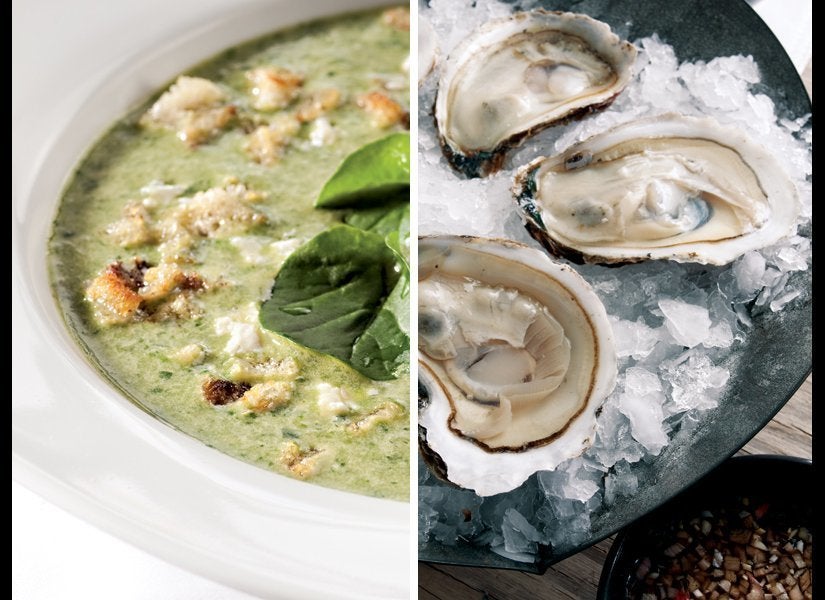
Most dinners of this time period began with soup and was accompanied by seafood dishes. Seafood is lighter than other proteins, making it more appropriate for a starter course. You could normally find at the table one shellfish plate and one fish during this course.
Creamy Watercress Soup
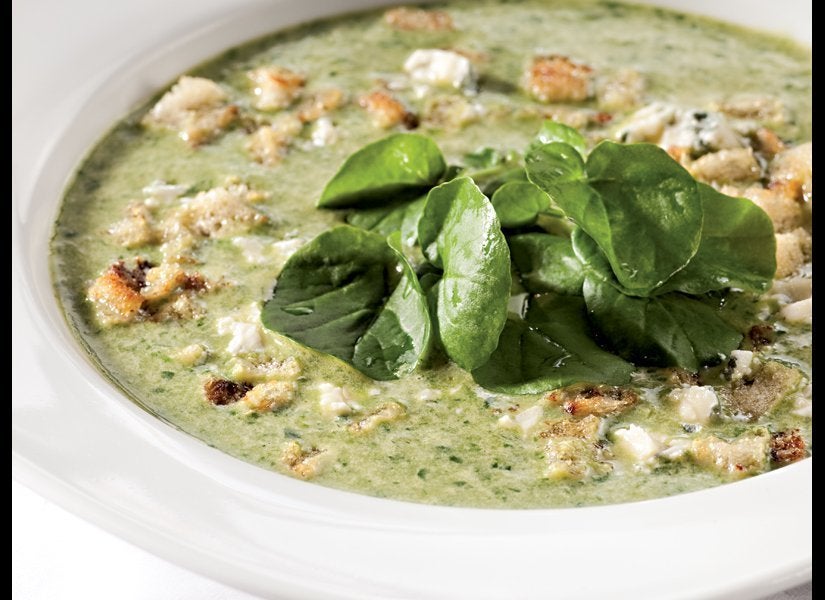
EatingWell
This soup is a spicy pureed green soup. It gets its kick from a hint of horseradish and blue cheese, and is lightened up with its base of fresh watercress.Get the Creamy Watercress Soup recipe
Oysters On The Half Shell With Mignonette Sauce
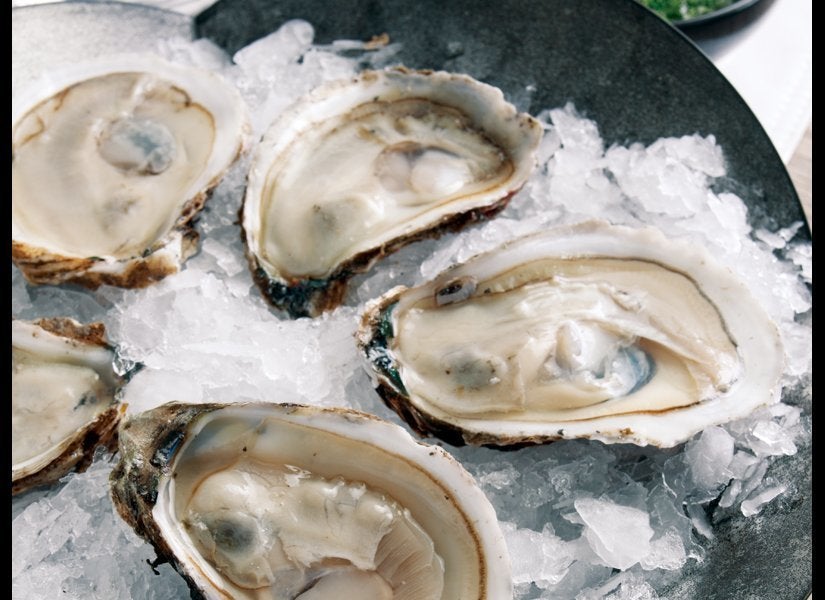
EatingWell
On the half shell, with mignonette sauce, is a classic way to serve oysters. The sauce is a combination of champagne vinegar, shallots and black pepper.Get the Oysters on the Half Shell with Mignonette Sauce recipe
Advertisement
Poached Salmon With Creamy Piccata Sauce
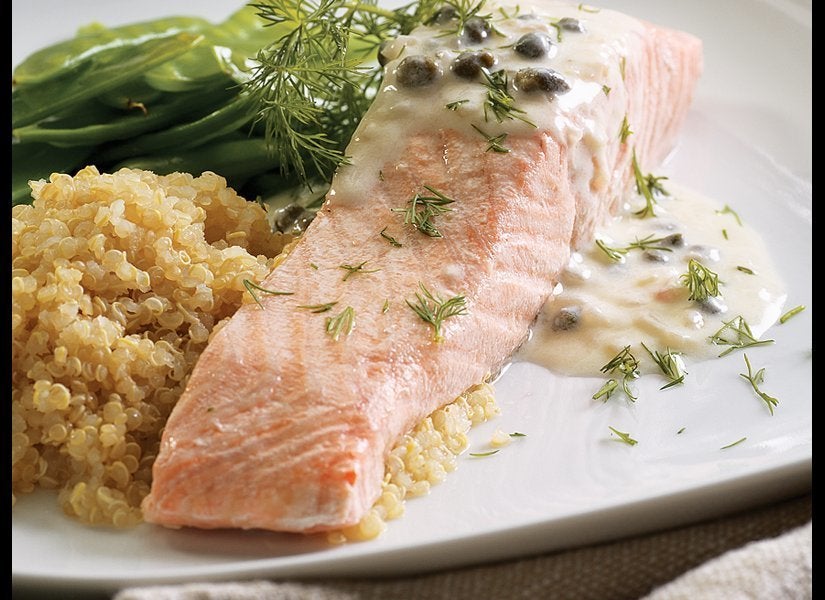
EatingWell
Poaching salmon is a light way to prepare this fatty fish. Topping it with the creamy piccata sauce -- full of capers, shallots and dill -- ensures that it stays rich in flavor.Get the Poached Salmon with Creamy Piccata Sauce recipe
The Entree Course
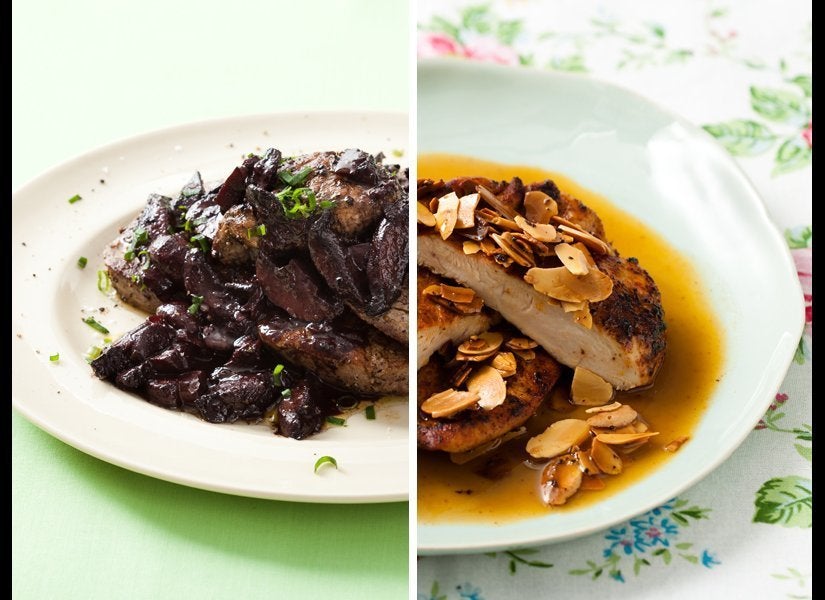
The entrees, which came before the second and third course, were normally an option of one meat dish and one poultry. Typical dishes varied from larded fillets of rabbits to fowl au bechamel.
Filet Mignon With Mushrooms And Mustard-Red Wine Sauce
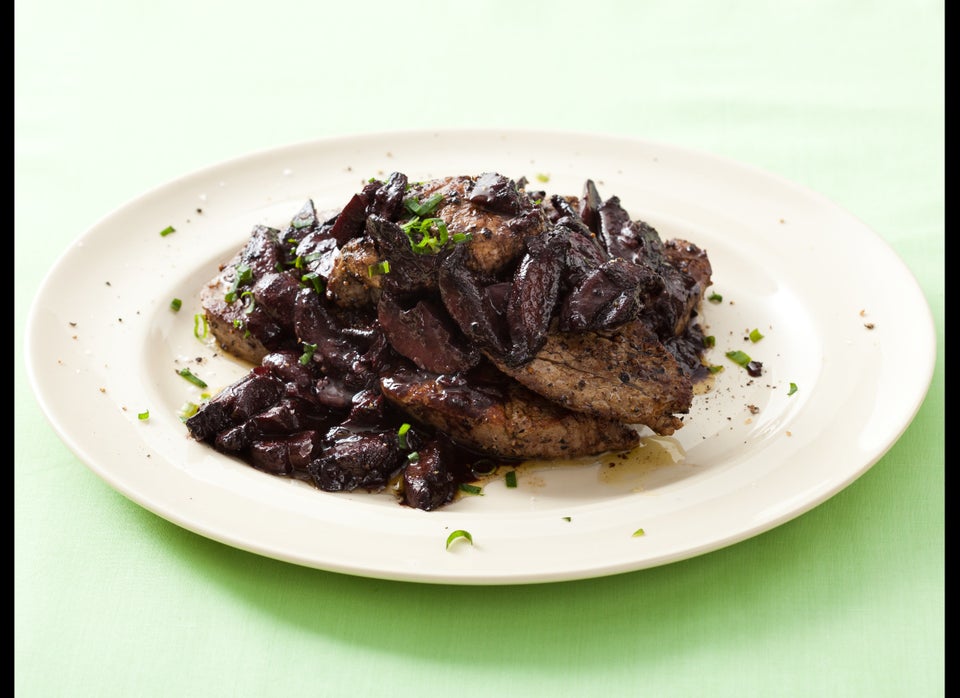
Filet mignon is an extremely lean and subtle cut of meat. The rich sauce that tops this filet is given a punchy flavor through the use of a spicy, dijon mustard.Get the Filet Mignon with Mushrooms and Mustard-Red Wine Sauce recipe
Advertisement
Mustard Tarragon Chicken Cutlets
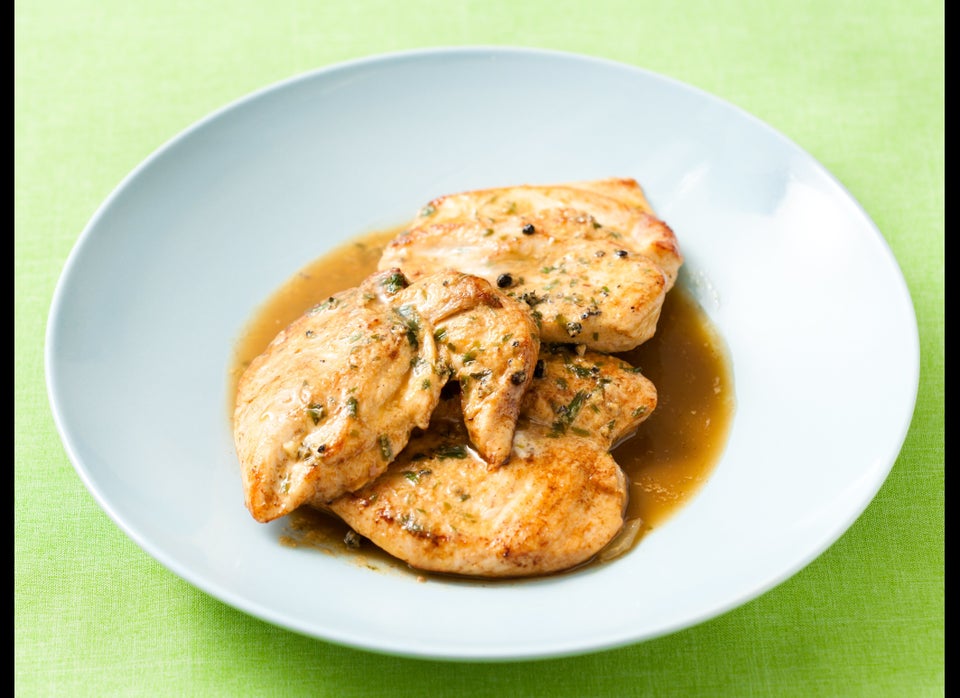
New Media Publishing
A strong mustard sauce, flavored with tarragon, tops this chicken dish. The wine added to the sauce adds a complexity of flavor to this otherwise simple recipe.Get the Mustard Tarragon Chicken Cutlets recipe
The Second Course
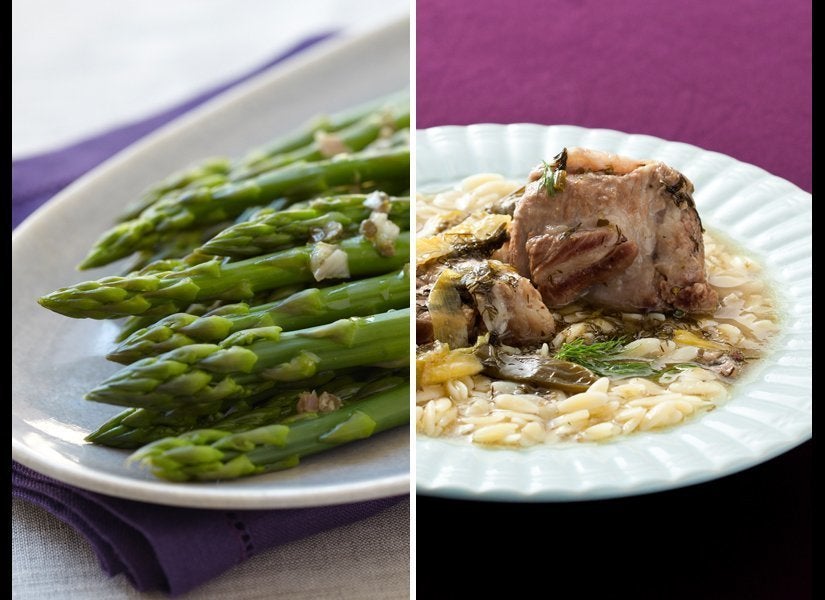
The second course is when the heaviest dishes came out. While meat did appear in the other courses, it is in the second course that dishes such as roast saddle of mutton, roast turkey with sausages and roast leg of pork with apple sauce were served.
Lamb Stew With Lemon And Dill
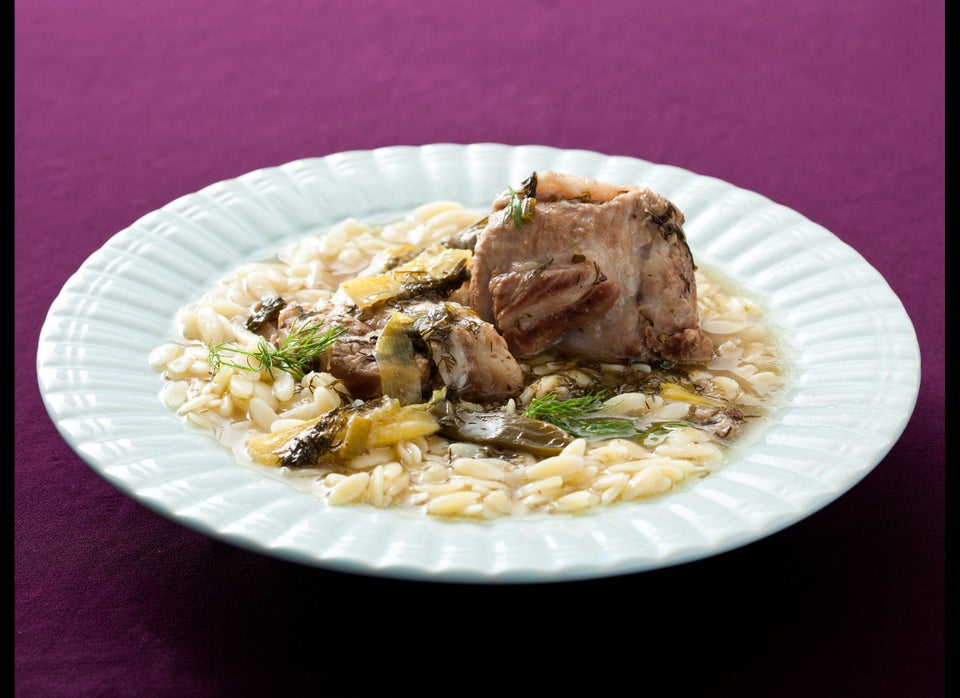
New Media Publishing
For this recipe it is best to find lamb on the bone -- it cooks more slowly, giving the flavors more time to develop. Flavored with dill, lemon and oregano, this lamb dish is simple to put together.Get the Lamb Stew with Lemon and Dill recipe
Advertisement
Turkey Breast with Poached Plums
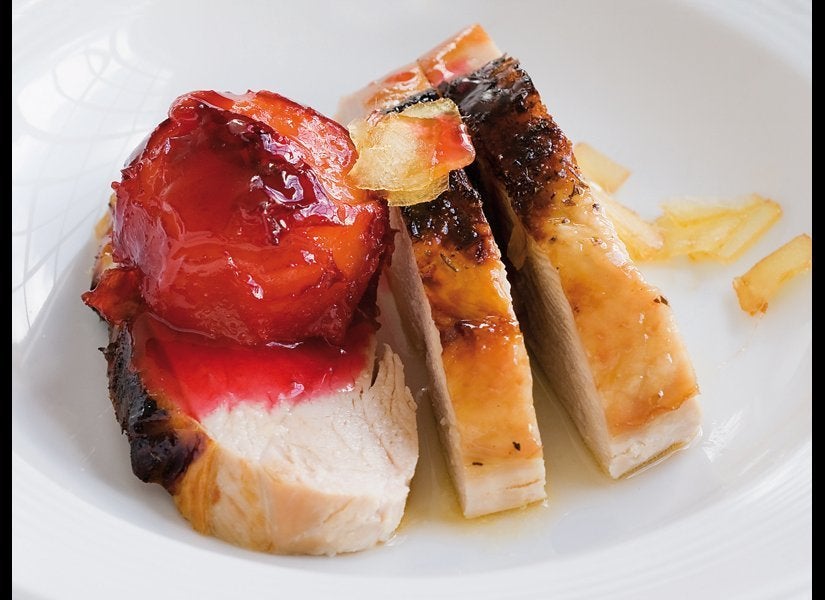
TASTE
This turkey breast recipe requires minimal effort and its results are packed with flavor. Roasted with ginger and syrup, the dish gets an additional sweet note when topped with freshly poached plums.Get the Turkey Breast with Poached Plums recipe
Asparagus With Shallot Caper Vinaigrette
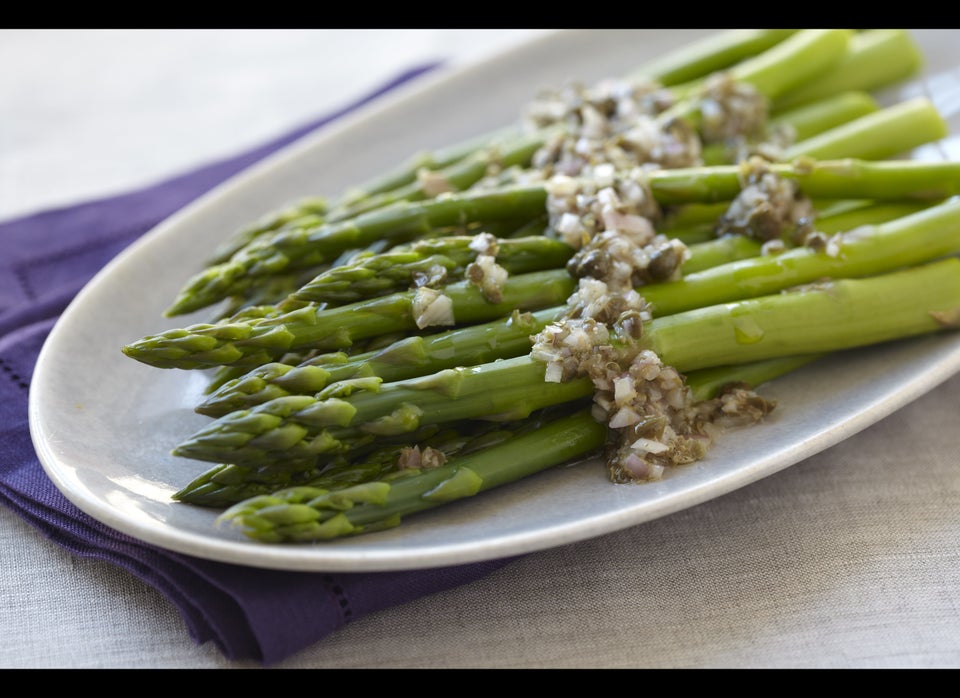
Frances Janisch
Be sure to cook the asparagus until just tender, with still a little crunch left in them. The shallot caper vinaigrette -- which is potent and rich -- transforms this simple asparagus dish into one that you will be making again and again. Get the Asparagus with Shallot Caper Vinaigrette recipe
The Third Course
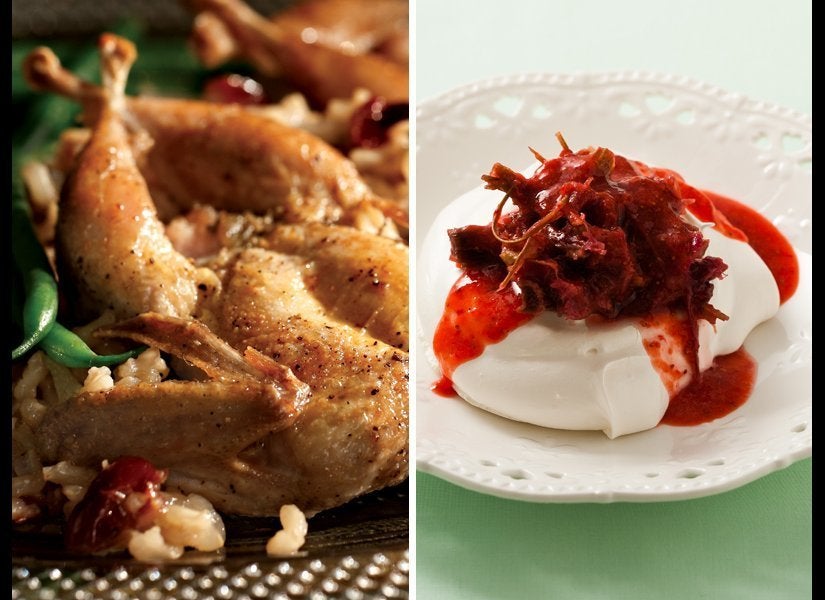
The third course was served before the dessert and ices. Typically, this course included a small game bird, such as squab, pigeon or quail, along with sweets. Typically found in the assortment of sweets was one type of fruit jelly, a meringue and a pudding.
Advertisement
Quail With Ginger-Cranberry Pilaf
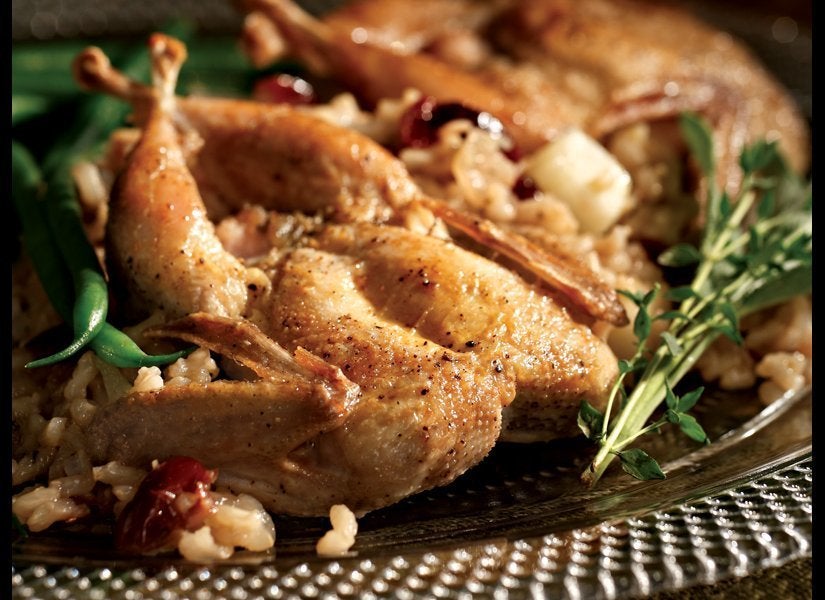
EatingWell
To get a nice crispy skin, this recipe suggests searing the quail in a skillet before finishing it off in the oven. It is baked atop a bed of pilaf sweetened with pears and cranberries, and flavored with fresh thyme and sage.Get the Quail with Ginger-Cranberry Pilaf recipe
Meringue Nests With Roasted Rhubarb And Strawberry Sauce
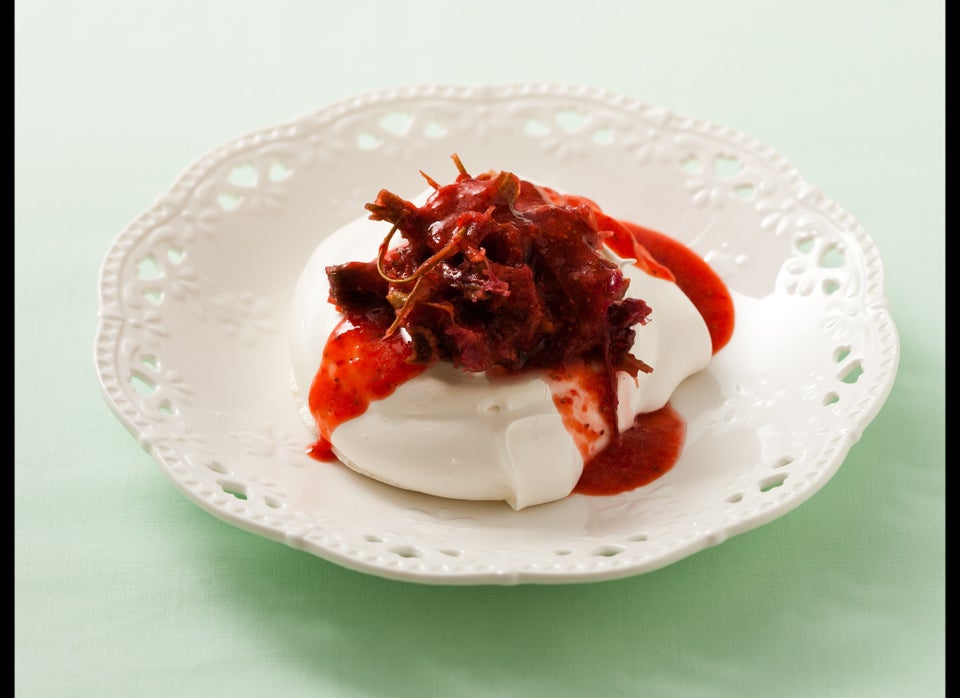
New Media Publishing
Meringue was a typical sweet treat in those days, and it was often topped with fresh fruit for garnish. Be sure you are using sugar and not salt, you don't want to have a repeat of the mishap that occurred on "Downton Abbey."Get the Meringue Nests with Roasted Rhubarb and Strawberry Sauce recipe
Apple Bread Pudding
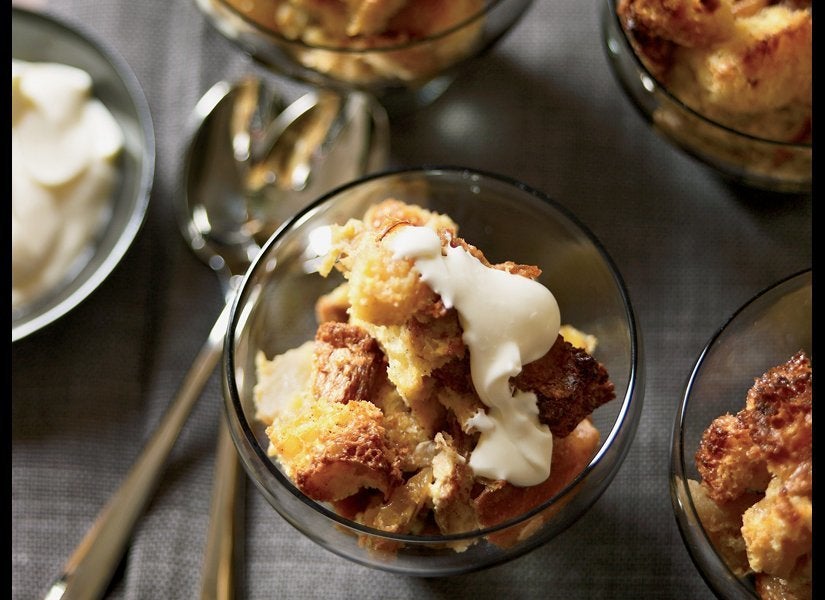
Anson Smart/Food&Wine
Appearing on the menus from this era was Cabinet pudding -- which is very similar to what we know as bread pudding. Cabinent pudding is a moulded pudding made with bread or sponge cake, sweetened with fruit and a creamy sauce to top it.Get the Apple Bread Pudding recipe
Advertisement
Jellied Cranberry Sauce With Fuji Apple

Frances Janisch/Food&Wine
Don't eat the canned jellied cranberries -- make it at home! It's easy, and delicious, with this recipe. The cranberry jellied sauce is dotted with apple pieces, which adds a nice flavor contrast. Get the Jellied Cranberry Sauce with Fuji Apple recipe
Apple Confit
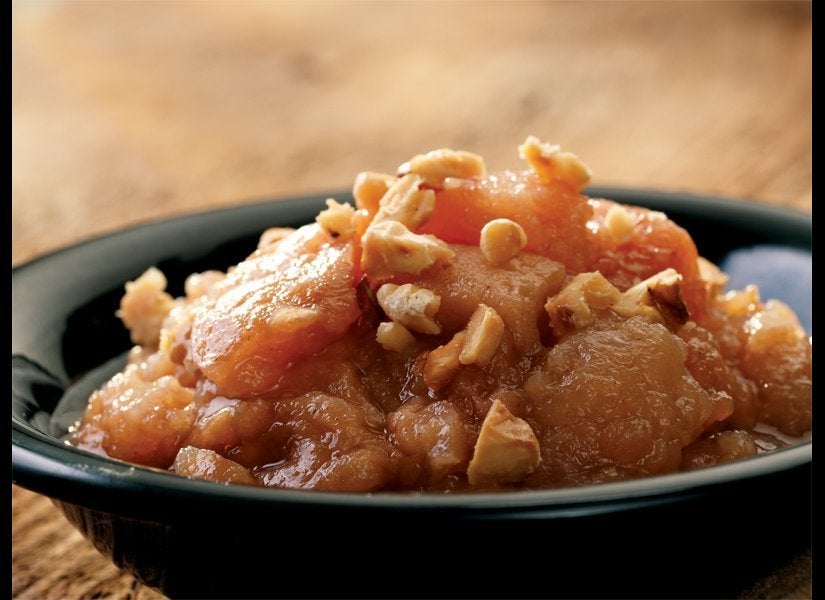
EatingWell
Making your own apple sauce is easy to do -- and the flavor is far superior to any store-bought variety. Once you try this recipe, you will be wondering why you had not done so sooner. You can make this recipe ahead of time, it keeps in the fridge for about half a week (and tastes great as a topping for pancakes).Get the Apple Confit recipe
Advertisement
